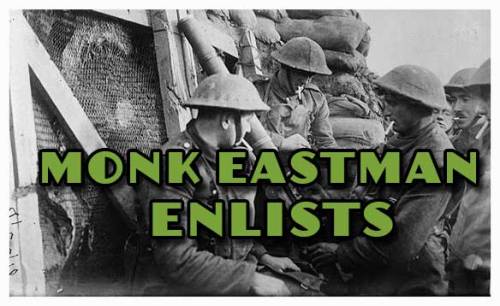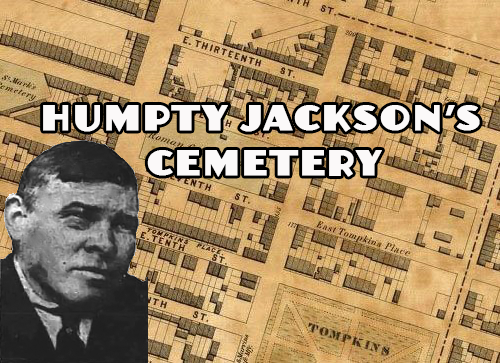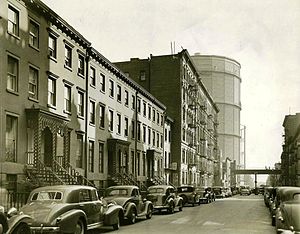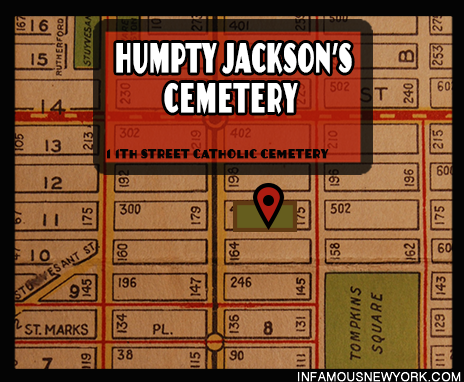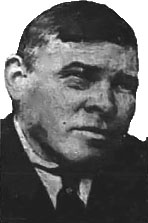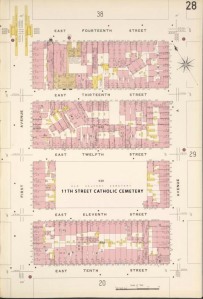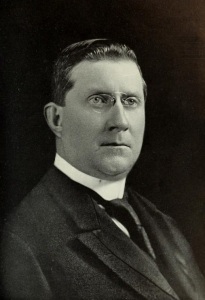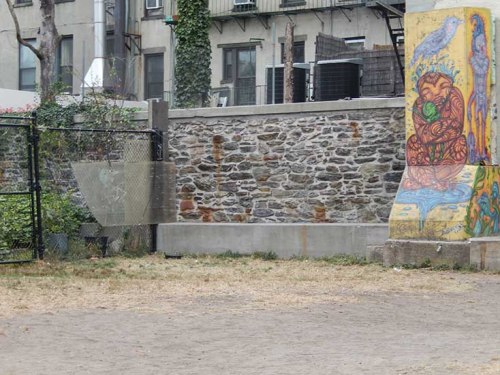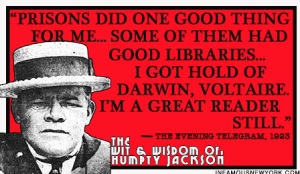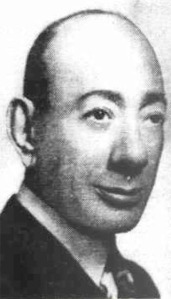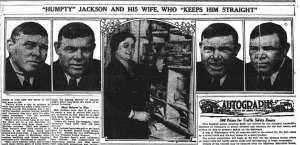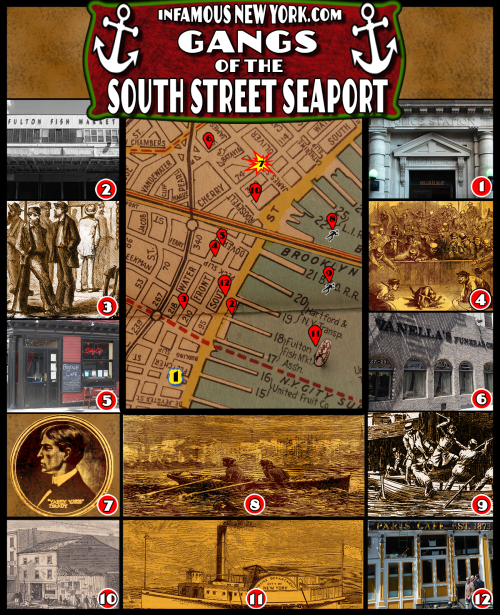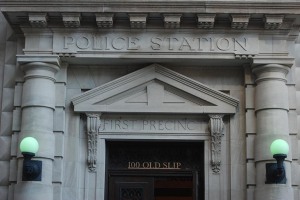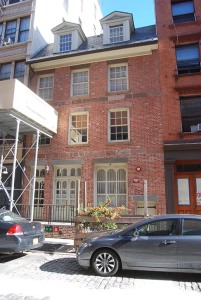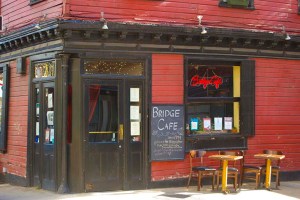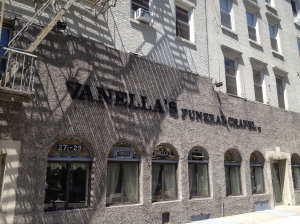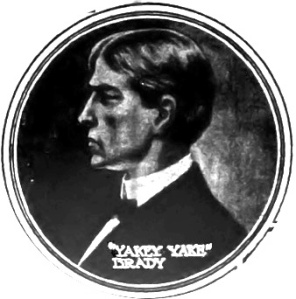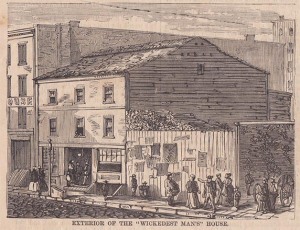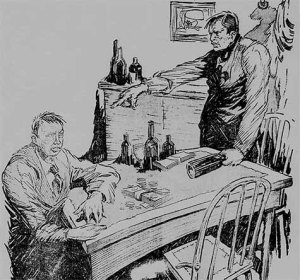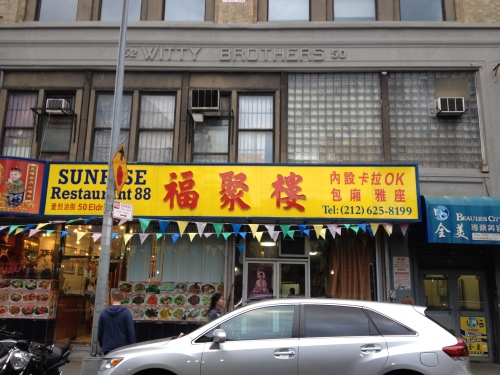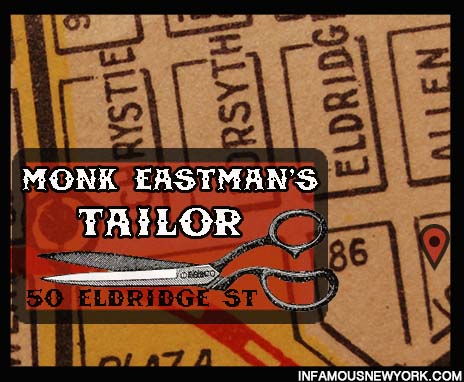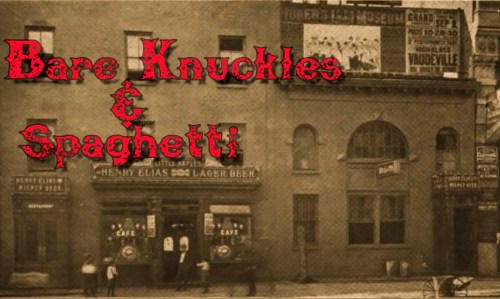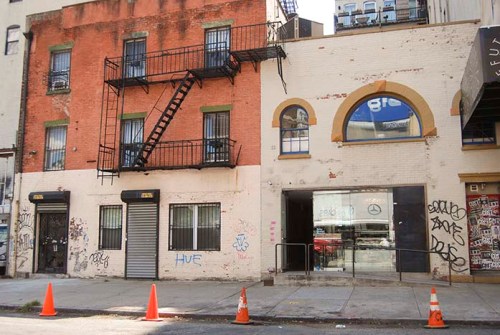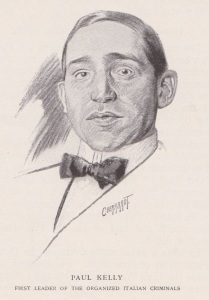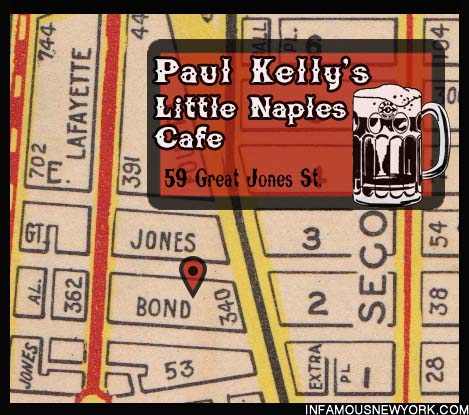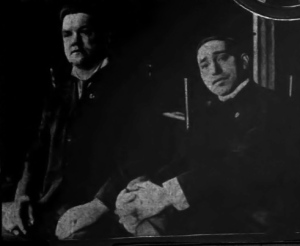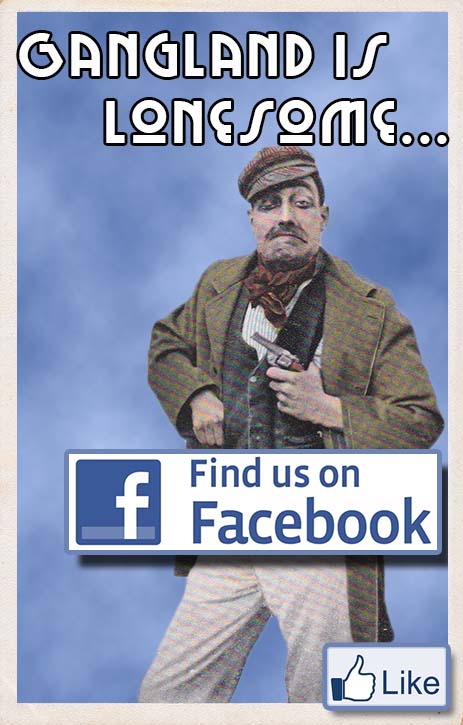Monk Eastman goes to WWI: The Bedford Atlantic Armory
Address: 1322 Bedford Avenue
Status: Homeless Shelter
* Part of this story originally appeared in an article I wrote for Military Heritage Magazine.
A hushed awe fell over the army medical inspectors when William Delaney’s clothing hit the white tiled floor at the Bedford Atlantic Armory located at 1322 Bedford Avenue, Brooklyn. Veterans had scars, but what the doctors witnessed was ridiculous. Delaney’s long list of injuries included a busted nose, two cauliflower ears, a patchwork quilt of knife scars and two scabby old bullet holes blasted though his bulging torso.
When the physicians wondered aloud about the origin of the wounds, Delaney spat the answer through a mouth full of gold teeth, “A lot of little wars around New York.” Little did the army doctors know, Delaney was actually Monk Eastman, the toughest goon ever to swing a lead pipe on Manhattan’s Lower East Side.
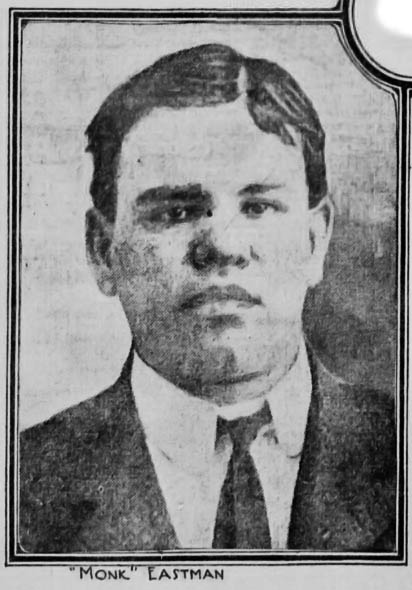
Monk Eastman had survived turn of the century street wars of the Lower East Side, and the trenches of the First World War.
Monk Eastman Joins O’Ryan’s Roughnecks
Addled by opium and fresh out of prison, Eastman needed to a change. Time was running out for the middle-aged gangster. The day after his release in 1917, the ex-con headed home to Brooklyn to enlist in the 106th regiment of the 27th Infantry Division of the New York National Guard, a force aptly named O’Ryan’s Roughnecks for its commander Major General Frank O’Ryan.

Monk Eastman enlisted for WWI at the Bedford Atlantic Armory located at 1322 Bedford Avenue.
Bedford Atlantic Armory: Monk Eastman Enlists
Monk must have marveled at the red-pressed brick castle on Bedford Avenue. Constructed in the Romanesque Revival Style, the architectural firm of Fowler & Hough the Bedford Atlantic Armory was built in 1891 with a 136-foot tall corner tower.
Scholars cannot say for sure what drove the forty- four-year-old gangster to join the 27th. Perhaps Eastman was following the example of his father Samuel who fought in the Battle of Bull Run. Some historians suppose that Monk just wanted to turn his life around and kick his opium habit. Now a member of New York’s 27th Infantry Division, the 44-year-old gangster prepared to bring his own brand of terror to the trenches of the First World.
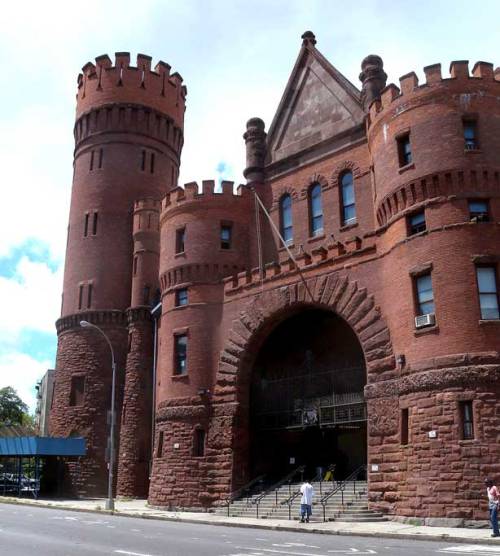
Monk Eastman enlisted in the 27th infantry division here in the castle like Bedford Atlantic Armory (Image via Wikipedia).
Shipping Out: Trench Warfare School Camp Wadsworth
On August 30th 1917, Eastman and the 27th shipped out to the most intensive trench warfare school in the United States at Camp Wadsworth, South Carolina. In their training, the recruits faced diluted chlorine gas, trench clearing drills, and all the other horrors of the Great War.
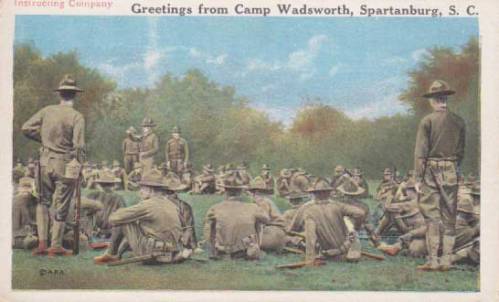
Platoon Sergeant Hank Miller recalled that the men teased Eastman, calling him “pop” because of his advanced age, but in basic training the elderly doughboy amazed his much younger comrades. The old man could outrun anybody in the unit. When Eastman hit a bayoneting dummy, he nearly tore it in half. Delaney’s secret eventually came out and the taunting ended: pop was Monk Eastman, the infamous Bowery desperado.
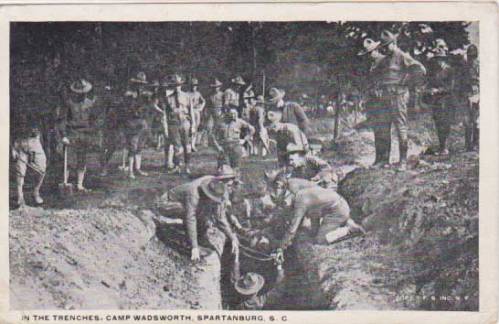
Bowery Brawler in the Trenches
The prospect of fighting on the side of New York’s deadliest brawler thrilled the young recruits, and the doughboys were soon ready for anything, for the gangster instructed the men in the Eastman school of no holds barred gutter fighting. By now, Eastman served as the linchpin of the 106th’s morale when the 27th docked in France.

Eastman was once the prince of the Lower East Side, but opium addiction and prison sentences destroyed his kingdom.
Monk on the Poperinghe Line
On July 9, Eastman and the 27th marched to the Poperinghe Line in the Ypres Salient to put a stop to the rampaging forces of Crown Prince Rupprecht of Bavaria and his Sturmtruppen assault troops.
British command charged the Roughnecks with holding the line behind Dickbushe Lake against the Prince’s seasoned storm troopers. Eastman and his comrades dug in under the shadow of Mont Kemmel and Vierstraat Ridge, two German strongholds bristling with heavy artillery. For days and nights, shells and shrapnel rained down on the 27th’s position.
As the barrage tore holes through the unit, the first waves of elite Sturmtruppen assault teams came over the top and engaged Monk’s unit in hand-to-hand combat. It was during this bitter defense that the first tales of Eastman’s heroism began to circulate. At night, Monk led his own forays into no man’s land. When the Germans nearly overran the trenches, Monk met the Kaiser’s finest with his tattooed knuckles. While rescuing a fallen comrade, a rifle round blew through the old brawler’s hand, but he wrapped the wound and fought on.

The hard nosed Major General Frank O’Ryan leader of the 27th Infantry Division.
Taking Vierstraat Ridge
O’Ryan ordered Colonel Franklin Ward, commander of the 106th, to seize the heavily fortified Vierstraat Ridge. Under the cover of a barrage, Ward and the screaming men of the 106th went over the top. A German staccato of machinegun fire pined down the entire regiment, but Monk broke the stalemate with a fist full of Mills Bombs. According to the New York Tribune,
“The German gunners caught sight of him. They could not depress their gun sufficiently to hit him and Monk crawled forward and blew them up…”–The New York Tribune
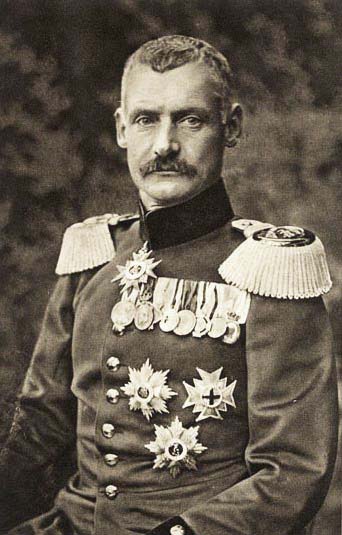
Crown Prince Rupprecht of Bavaria.
Monk Eastman Is Wounded
In the attack, bullets shredded Eastman’s backpack and shrapnel sliced through his leg, but the destruction of the German machinegun nest allowed the 106th to take the ridge. Because of the success at Vierstraat, in three days time, the 27th captured Mount Kemmel, Rosignoll Wood, Petite Bois, Plateau Farm, and hundreds of prisoners, but Monk was not there celebrate. He was laid up in a field hospital nursing his wounds. On September 4, the 27th moved to prepare for one of the greatest battles in the war, the taking of the impregnable Hindenburg Line, gateway to the German Homeland.
When Monk got wind of the plans in the hospital, he went renegade. The gangster stole away into the night, fleeing the hospital half-naked and barefooted. According to Lieutenant J.A. Kerrigan,
“He escaped from the hospital, equipped himself from a salvage dump, joined his company, and was in action throughout the entire Hindenburg line show.” –Lieutenant J.A. Kerrigan.
Cracking the Hindenburg Line
Unfortunately for the 27th, the Hindenburg attack made the battle in the Ypres seem easy. According to Maj. General O’Ryan’s memoirs, the line represented the “rock of Gibraltar of German moral.” Devised by Field Marshal Paul Von Hindenburg, the position consisted of three concrete trenches surrounded by three belts of barbed wire, mines, and machine gun nests.
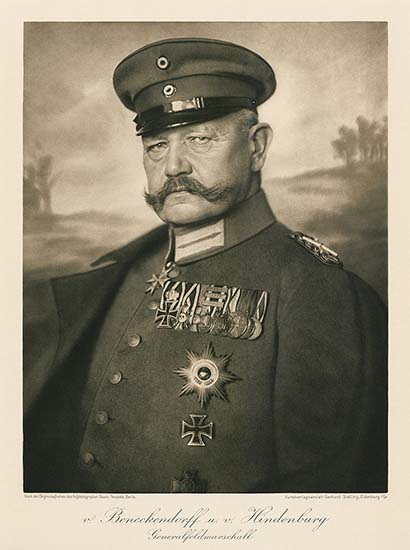
Field Marshal Paul Von Hindenburg, engineer of the Hindenburg line of barbed wire, mines and machine gun nests.
Paul von Hindenburg
German reinforcements stood in the nearby St. Quintin Canal Tunnel, a bombproof 50 meters deep brick tunnel built by Napoleon Bonaparte. The tunnel housed thousands of German reinforcements on canal boats who could be shuttled anywhere on the line unseen and under cover. The task of cracking this impressive nut naturally fell to the 106th, and Eastman’s regiment served as the battering ram that led the first charge.
On the morning of September 27, the 106th stormed though a hail of machineguns and artillery fire to capture a precarious foothold from which the main assault on the St. Quintin tunnel would be led. Amid this carnage, Monk showed a tender side when the 106th seized a group of German prisoners, including a cocky teenager, one of the Americans attempted to ram a bayonet though the arrogant boy’s chest. Monk stopped the solider with only a few words, “Let him alone he’s only a kid.” he said. By now the troops knew not to argue with the gangster.
Monk Becomes Stretcher Bearer
With the position secure, the 106th withdrew to the rear, but Monk begged the head surgeon, Major Larson, for permission to remain as a stretcher-bearer. According to Major Larson,
“All through the time that men of his company were resting Eastman served in the front line trench, carrying back wounded men.”-Major Larson
A few days later, the 27th demolished the canal tunnel and broke the Hindenburgh Line. The war was over.
Monk is Pardoned by Governor Al Smith
On March 25, 1919, the 27th marched down Fifth Avenue as heroes, but Monk’s feats of heroism were all but unknown. The gangster’s officers prepared a surprise for the hero of the 106th upon their return home. Colonel Ward, Major Scott Burton, Captain James Conroy, and Lieutenant Joseph Kerrigan presented a massive tome of over one hundred letters and signatures to Governor Smith asking for Eastman’s pardon, and on May 8, 1919, the Governor forgave Edward Eastman’s past crimes.
The New York newspapers sang the mobster’s praises and spoke of the power of reform. Unfortunately, while reporters paid the mobster compliments, Monk was back to his old tricks working as an enforcer for the Brains of Broadway Arnold Rothstein. The gangster-turned-doughboy-turned-goon did not live to see fifty. Click to read The Death of Monk Eastman. www.infamousnewyork.com/2015/01/09/the-death-of-monk-eastman-union-square/
